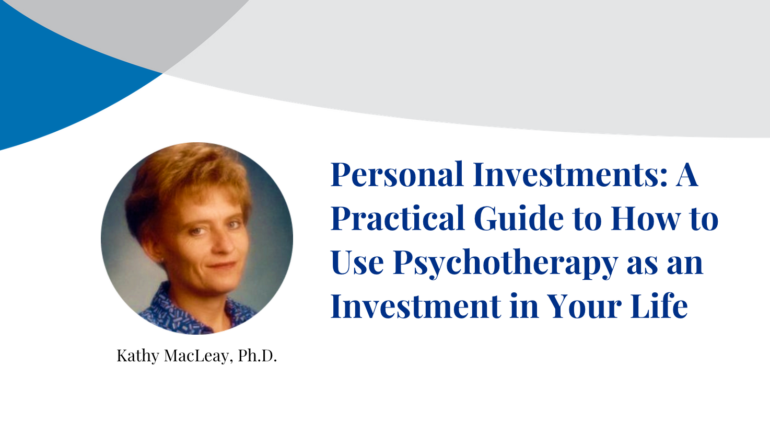I have been working in the field of psychology since the mid ‘70s. When I started working with clients in the early ‘80s, I discovered that many patients would prematurely terminate therapy for various reasons. I knew much of the outside world had a negative opinion about psychotherapy. Many saw and still see therapy as something only for people who have a “problem” or who are “crazy.” The stigmas engendered by such persistent, misinformed thinking turn many people away from seeking therapy.
I talked to colleagues about my theories as to why patients would leave treatment before it had the chance to help them. The response I often got was, “You should write a book,” and so I did.
I titled the book “Personal Investments: A Practical Guide to How to Use Psychotherapy as an Investment in Your Life.” I did not write it for the professional community, although I was hoping it might enlighten new therapists in training. It covers a practical, theoretical understanding of psychodynamic theory.
Therapy is a tool for learning. Patients experience an emotional education when they go to therapy. My book focuses on helping patients recognize patterns of behavior that prevent them from being confident and strong. The therapist’s role is to intervene in such a way that invites their patients to feel all feelings in sessions and express them verbally. The therapist contains those feelings and ensures the patient doesn’t take those feelings home with them.
Therapists learn how to develop a solid, close relationship with their patients, creating an environment in which patients can learn to manage difficult emotions and handle life’s challenges. Through that connection with the therapist, patients can build the inner confidence to navigate their lives independently.
I wanted the book to accomplish several other goals as well:
- To dispel the myths that psychotherapy is either a miracle cure or completely worthless
- To convey to the lay population that therapy is an investment in oneself
- To impart the idea that therapy teaches people how to take care of themselves, learning how to handle all emotions, positive and negative
- To teach the reader to be emotionally independent by taking responsibility for their actions instead of blaming themselves or others
Feedback I get from patients and therapists alike reading this book is that these ideas are based on common-sense thinking and provide a path to emotional health and well-being.
The book describes the important emotional need of human beings for safety, control, fairness, belonging, and love, and it spells out how to meet these needs to experience a feeling of security in an uncertain world.
Kathy MacLeay, Ph.D. is an associate professor in The Chicago School’s Applied Clinical Psychology doctoral program.

